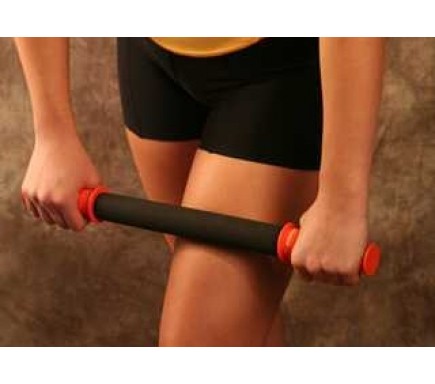Brian Schiff’s Blog
Injury Prevention, Sports Rehab & Performance Training Expert
I work with many runners in our clinic. I often see restrictions in the soleus. While the running community is warming up to soft tissue mobilization, many runners are still resistant to embrace it routinely and engage in it more so only when they are hurt or lacking flexibility.
STM (soft tissue mobilization) should be part of every runner’s maintenance program. Why? Simply put, repetitive stress takes its toll on the body. Rolling or releasing the tissue increases blood flow, eliminates trigger points, and facilitates optimal soft tissue mobility and range of motion.
In the diagram below, you can see common trigger points in the soleus. The X represents the trigger point & the red shaded area is the referred pain caused by the trigger point.

In the case of the soleus, restricted dorsiflexion could lead to other biomechanical compensations with running. Initially, this often creates a dysfunctional and non-painful (DN) pattern. Over time, this may eventually become a dysfunctional and painful (DP) pattern forcing runners to seek medical care. The terms DN and DP come from Gray Cook’s Selective Functional Movement Assessment (SFMA).
The gait cycle is certainly altered from dysfunction in this muscle. If ankle joint dorsiflexion is compromised (a common effect of soleus restrictions), there can be increased strain on the quads and altered movement in the hip. Overpronation and excessive hip adduction and internal rotation are common compensations seen with running. Other signs and pathology that may be associated with a soleus trigger point may include:
- Plantar fasciitis
- Heel pain
- Shin pain
- Knee or hip pain
- Back pain
As such, restoring mobility is important. A recent study revealed that immediate improvement in ankle motion can be attained with just a single treatment (click here for the abstract).
So how do you effectively resolve soft tissue issues in this area? I suggest using a foam roller or better yet the footballer and baller block in the Ultimate 6 Kit for Runners by Trigger Point (see pic below)

Today I have some exciting news to share. I have recently partnered with OpenSky to make some of my very favorite training and rehab tools available online to you as well. Essentially, at OpenSky I am able to send my readers to my own personal supply shop.
In this shop, I will be showcasing products I believe in and use in my daily practice to help my clients achieve peak health and fitness. For now, I only have three products in my shop, so you are essentially only getting a “sneak peek” as I quickly pull the curtains back for you.
In a few weeks, I will have a grand opening of sorts with many more products to offer. So, what’s in the shop and how does it relate to me? Well, today, I wanted to briefly discuss the importance of using a rolling device to facilitate myofascial (soft tissue) release. Many of you know I run and train runners and athletes of all sports. One of the most common issues I see (especially in runners) is problems or pain related to trigger points or soft tissue tightness.
How do I solve this? When I injured my soleus training for the half marathon last fall, I used a roller to resolve pain and tightness before and after each run. Using a self roller such as the Tiger Tail is very effective in resolving these trigger points and areas of tightness. You will not be able to enjoy maximal strength and power production in your workouts if these trigger points are interfering or limiting you because of persistent pain.
You would like to think stretching alone would rid you of such issues, but this is just not the case. Once you effectively relieve the trigger points, the muscle balance is restored and you can get back to 100% again. So if you or someone you know always complains of tightness or soreness in one calf, hamstring, IT band, etc., this may be just the answer.
The best part the Tiger Tail is that it is very affordable and easily transportable if you are on the go. You control the pressure and location of the release. In just 5-10 minutes you will be on your way to feeling much better.
Be sure to check it out today at my store by clicking here or on one of the images above. I look forward to sharing more of my favorite training tools in the near future.



